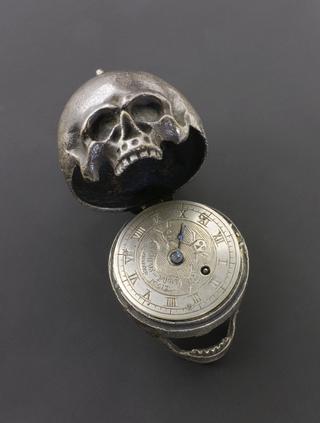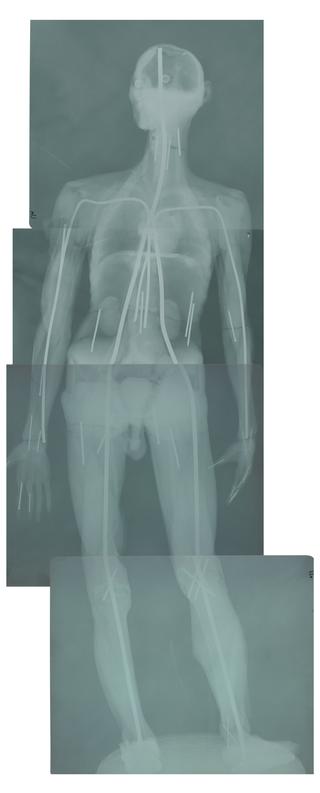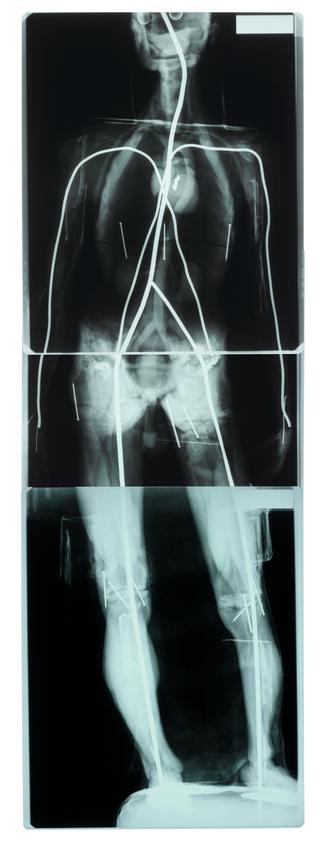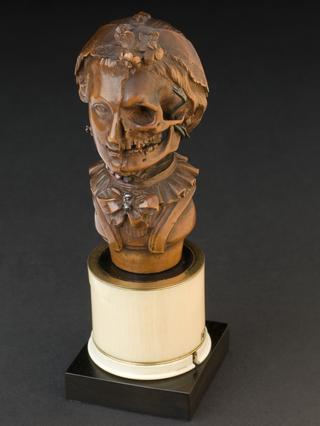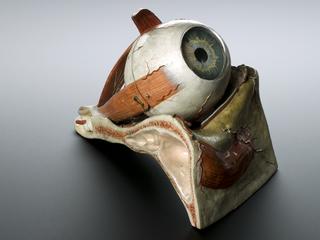




Large working model showing movement of bones of the middle ear, used for teaching, possibly 2nd half of 19th century
The large piece of leather represents the ear drum. This vibrates and passes the sound to the bones of the middle ear, which are called ossicles. These bones also vibrate and amplify the sound to pass it on to the inner ear, which contains the cochlea. The hairs of the bones in the inner ear send a nerve impulse to the brain.
Anatomical models were useful in demonstrating the anatomy of the body to medical students as they were a longer lasting alternative to decaying body parts, which were often in short supply. Seeing body parts on a larger scale, rather than life size, makes the structure easier to understand.
Details
- Category:
- Anatomy & Pathology
- Collection:
- Sir Henry Wellcome's Museum Collection
- Object Number:
- A157286
- Materials:
- wood, papier mache, steel (metal), leather, wood (unidentified), cotton (fibre) and incomplete
- Measurements:
-
overall: 235 mm x 330 mm x 181 mm, 1.18 kg
- type:
- ear and anatomical model
- credit:
- Glendining
